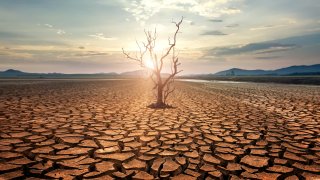
Asia was most impacted by extreme weather and climate in 2023, UN report shows
- More than 9 million people were affected as floods and storms hit the region, leading to over 2,000 causalities. Meanwhile, a trend of increased heat waves in the region continued.
- Floods and storms caused the most damage, while trends of ice melt and heat waves continued to accelerate, according to the report.
- The rate of temperature warming in the continent and much of its surrounding seas and oceans is above the global average and has exacerbated extreme weather.
Asia was the most disaster-hit region in the world last year as extreme weather and climate threats intensified amid global warming, according to the World Meteorological Organization, the UN's weather agency.
"Many countries in the region experienced their hottest year on record in 2023, along with a barrage of extreme conditions, from droughts and heatwaves to floods and storms," said WMO Secretary-General Celeste Saulo said in a report released this week.
More than 9 million people on the continent were affected by the floods and storms, leading to over 2,000 casualties. Meanwhile, a trend of increased heat waves in the region continued.
Get a weekly recap of the latest San Francisco Bay Area housing news. Sign up for NBC Bay Area’s Housing Deconstructed newsletter.
"Climate change has exacerbated the frequency and severity of such events, profoundly impacting societies, economies and, most importantly, human lives," Saulo added.
The report warned that key climate change indicators, such as surface temperature, glacier melting, and sea level rise, signaled worsening conditions and the need for greater disaster risk prevention in Asia.
Temperatures up, precipitation volatile
Money Report
In 2023, the mean temperature over Asia was the second highest on record.
"With the warming trend almost doubling since the period from 1960–1990, Asia is heating up faster than the global average, with increased casualties and economic losses," according to WMO's report.
Particularly high temperatures last year were seen in areas from western Siberia to central Asia, and from eastern China to Japan, while countries like Japan and Kazakhstan experienced record heat, the report found.
According to a NASA report, increased temperatures are associated with variations in precipitation and increased frequency of both drought and extreme water events. Other scientists have also warned that sustained periods of dryness can trigger floods when heavy rains occur.
While WMO found that much of Asia suffered from a substantial lack of precipitation in 2023, there were also many extreme weather events associated with heavy rainfall and flooding.
According to a recent report, severe floods in China and droughts in India caused most of Asia-Pacific's $65 billion of economic damages last year.
Heavy floods struck northern China in July — which witnessed some of the worst storms in years, while the capital of Beijing saw the heaviest rainfall in 140 years. Meanwhile, the southwest of China suffered from sustained drought, with below-normal precipitation levels nearly every month of 2023.
India also suffered from floods and drought, with the latter reaching unprecedented levels in August, the world's hottest month ever recorded. The country also saw heatwaves in April and June that caused over 100 deaths by heatstroke.
The WMO report noted that a lack of rainfall could also have detrimental effects on drinking water sources, agriculture, industry, and hydropower.
Better preparedness needed
The WMO has called for better climate preparedness across Asia.
Authors of the report argued the data confirms the need for early warning systems for extreme weather and more disaster risk reduction to mitigate losses and damage caused by climate change in the future.
The region already suffered 3,612 natural disasters between 1970 and 2021, causing $1.4 trillion in economic losses and nearly a million deaths — accounting for 47% of the total global deaths due to natural disasters over the same period.
According to the WMO, the damage caused by a disaster can be reduced by 30% given an early warning is issued within 24 hours.
Saulo said the report's findings were "sobering."
"We are at a critical juncture, where the impact of climate change intersects with societal inequalities," she said in the report.